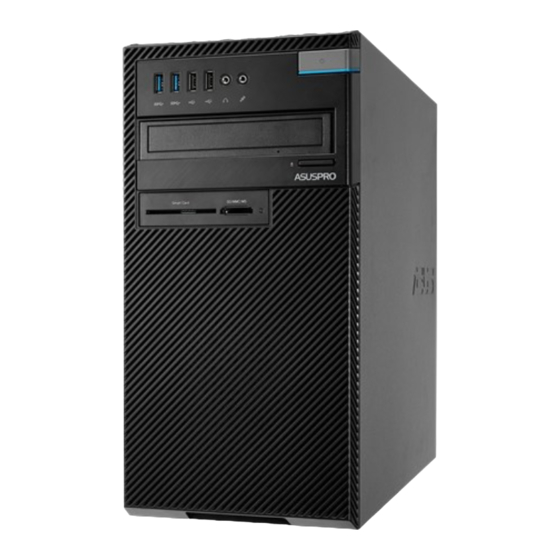
Summarization of Contents
Notices
ASUS Recycling/Takeback Services
Information on ASUS recycling and takeback programs for responsible disposal.
REACH
Compliance with the REACH regulatory framework for chemical substances.
Federal Communications Commission Statement
FCC compliance statement for digital devices regarding harmful interference.
Lithium Battery Warning
Cautionary notice regarding the handling and replacement of lithium batteries.
IC: Canadian Compliance Statement
Canadian compliance statement for digital apparatus and interference-causing equipment.
VCCI: Japan Compliance Statement
Japanese compliance statement for information technology equipment (Class B).
KC: Korea Warning Statement
Korean warning statement for electronic devices, specifying usage in residential areas.
RF Equipment Notices
CE: European Community Compliance Statement
EU compliance for RF exposure limits and R&TTE Directive.
Wireless Radio Use
Restrictions on indoor use for specific wireless frequency bands.
FCC Bluetooth Wireless Compliance
FCC compliance guidelines for Bluetooth transmitters and antennas.
BSMI: Taiwan Wireless Statement
Taiwanese compliance for low-power radio frequency devices.
KC (RF Equipment)
Korean RF equipment compliance notice and operational warnings.
Conventions used in this guide
Where to find more information
References to ASUS websites for additional information and updates.
Chapter 1 Getting started
Welcome!
Introduction to the ASUS Desktop PC, highlighting performance and design.
Getting to know your computer
Overview of computer components, ports, and chassis variations.
D830MT / D630MT Front panel
Identification of front panel ports and controls for specific models.
D830MT / D630MT Rear panel
Identification of rear panel ports and connectors for specific models.
D831MT/MD800 / D631MT/MD590 Front Panel
Identification of front panel ports and controls for different models.
D831MT/MD800 / D631MT/MD590 Rear Panel
Identification of rear panel ports and connectors for different models.
D830SF/SD800 / D630SF/SD590 Front Panel
Identification of front panel ports and controls for specific models.
D830SF/SD800 / D630SF/SD590 Rear panel
Identification of rear panel ports and connectors for specific models.
Setting up your computer
Guide to initial computer setup and hardware connection.
Connecting an external monitor
Instructions for connecting a monitor to the computer's display output.
Using the onboard display output ports
Guide to using the computer's integrated display ports.
Connecting a USB keyboard and a USB mouse
Instructions for connecting input devices via USB ports.
Connecting the power cord
Steps for connecting the computer to a power source.
Connecting multiple external displays
Steps to set up and connect multiple monitors for extended desktop.
Turning your computer ON/OFF
Procedures for powering the computer on and off correctly.
Chapter 2 Connecting devices to your computer
Connecting a USB storage device
How to connect and use USB storage devices with the computer.
Connecting microphone and speakers
Guide for connecting audio input and output devices to the computer.
Connecting Headphone and Mic
Specific instructions for connecting headphones and microphones.
Connecting 2.1-channel Speakers
Setup guide for connecting 2.1 channel speaker systems.
Connecting 4.1-channel Speakers
Setup guide for connecting 4.1 channel speaker systems.
Connecting 5.1-channel Speakers
Setup guide for connecting 5.1 channel speaker systems.
Connecting 7.1-channel Speakers
Setup guide for connecting 7.1 channel speaker systems.
Changing to the external audio output
How to switch audio output to external speakers or headphones.
Chapter 3 Using your computer
Proper posture when using your Desktop PC
Ergonomic guidelines for comfortable and safe computer usage.
Using the memory card reader
Instructions for inserting and accessing files from memory cards.
Using the optical drive (on selected models only)
Guide to inserting and removing optical discs like CDs and DVDs.
Configuring the USB ports using the BIOS
How to enable or disable USB ports through BIOS settings.
Configuring the HDD security setting using the BIOS
Setting up HDD password protection and security via BIOS.
Chapter 4 Connecting to the Internet
Wired connection
Instructions for establishing an internet connection via physical cables.
Connecting via a DSL/cable modem
Guide for connecting the computer to DSL or cable modems.
Connecting via a local area network (LAN)
Steps for connecting the computer to a local network.
Chapter 5 Using ASUS Business Manager
Installing ASUS Business Manager
Steps to install the ASUS Business Manager software from the support DVD.
Starting ASUS Manager
How to launch and navigate the ASUS Manager interface.
System
Accessing System Information to view hardware and software details.
Update
Downloading and installing hardware drivers, BIOS, and application updates.
Security
Accessing PC Cleanup and USB Lock utilities for system security.
PC Cleanup
Removing temporary and unnecessary files to free up disk space.
ASUS Secure Delete
Permanently erasing files to make them irrecoverable.
USB Lock
Securing USB ports, card reader, and optical drive with a password.
Backup & Recovery
Performing system restoration and maintenance tasks.
Power
Configuring power management settings for hibernation and sleep modes.
Tool
Accessing support links, AI Booting, and MyLogo utilities.
Ai Booting
Selecting bootable storage devices and modifying the boot sequence.
MyLogo
Customizing the boot logo image that appears during POST.
Changing the BIOS boot logo
Steps to update the BIOS boot logo and potentially the BIOS itself.
Chapter 6 Troubleshooting
Computer Power Issues
Solutions for the computer not powering on or the power LED not lighting up.
System Hangs and Connectivity Problems
Addressing system freezes and issues connecting to wireless networks.
Input and Display Issues
Troubleshooting problems with keyboard input, monitor display, and USB detection.
System Restore and Display Distortion
Restoring system settings and fixing distorted display on HDTVs.
Audio and Drive Issues
Resolving problems with speakers, microphones, and optical drive functionality.
Power Troubleshooting Table
Table outlining power-related problems, causes, and recommended actions.
Display and LAN Troubleshooting
Table for diagnosing display output and LAN connectivity problems.
Audio and System Performance Troubleshooting
Table addressing audio issues and system slowdowns or freezes.
CPU Noise Troubleshooting
Table for diagnosing computer noise issues related to the CPU and fan.








Need help?
Do you have a question about the SD590 and is the answer not in the manual?
Questions and answers